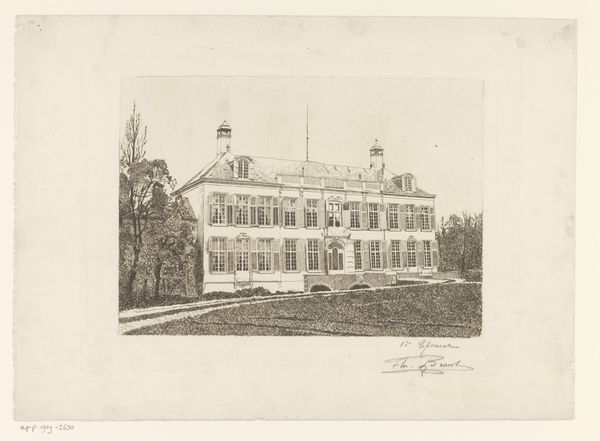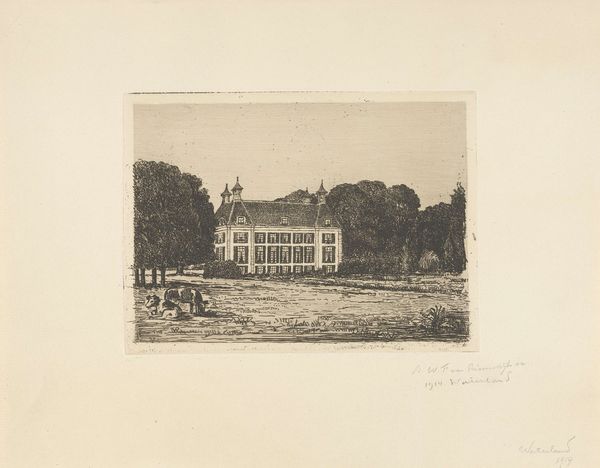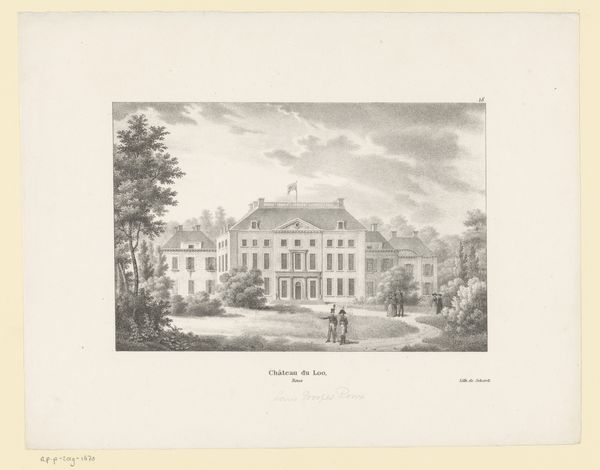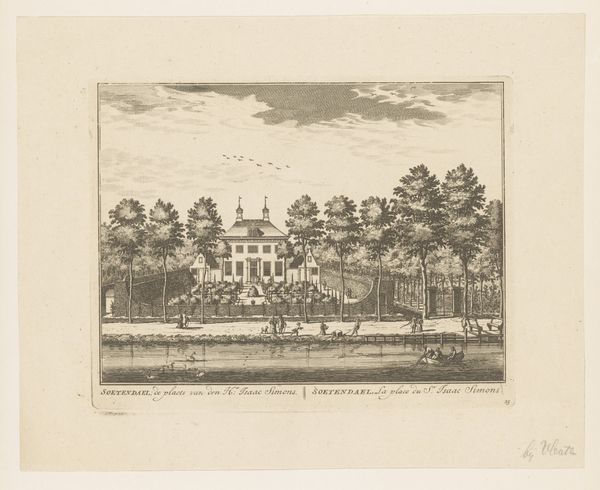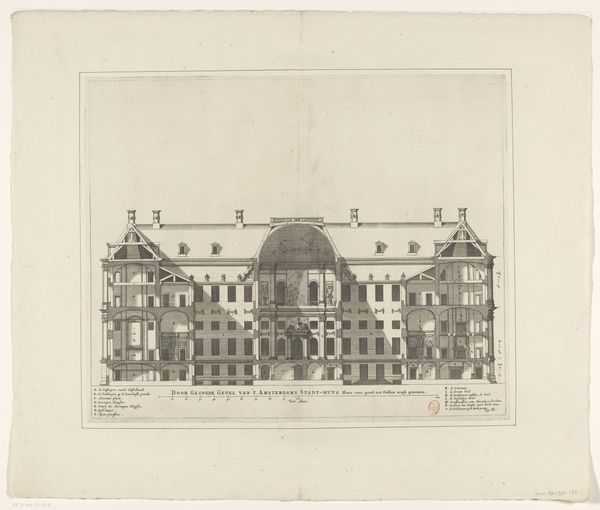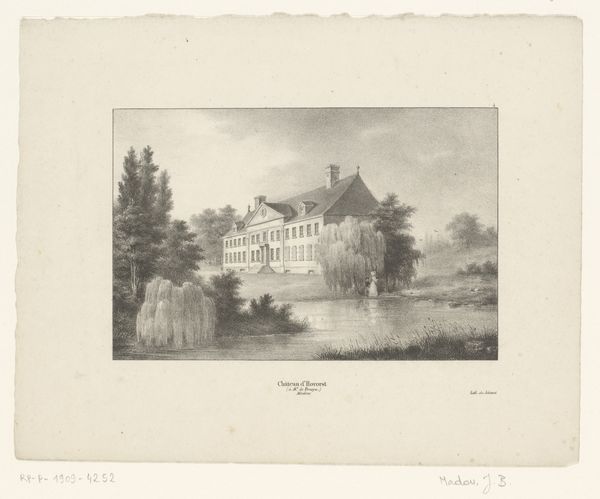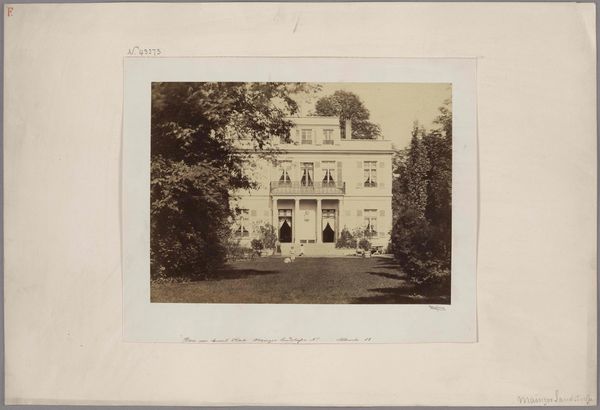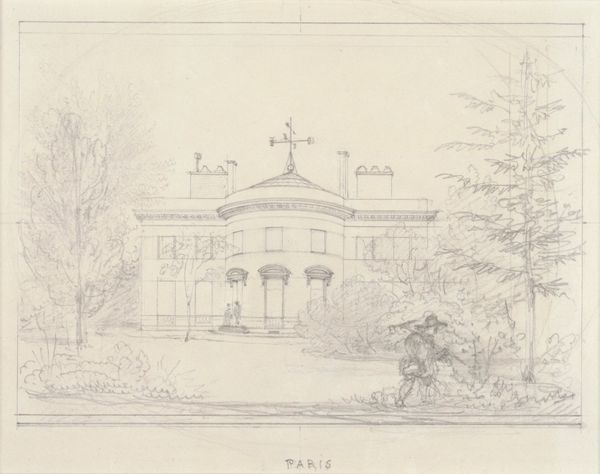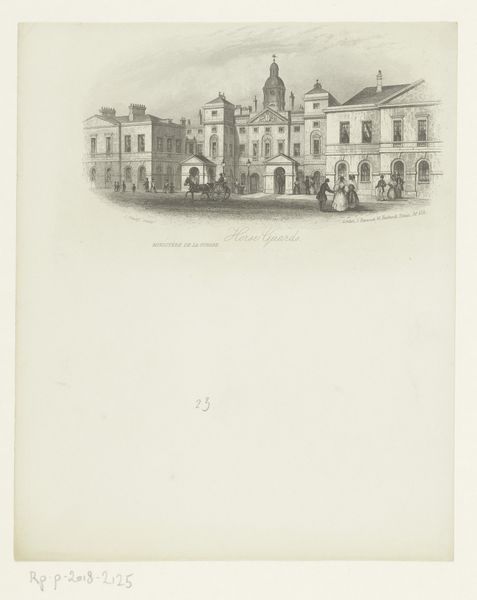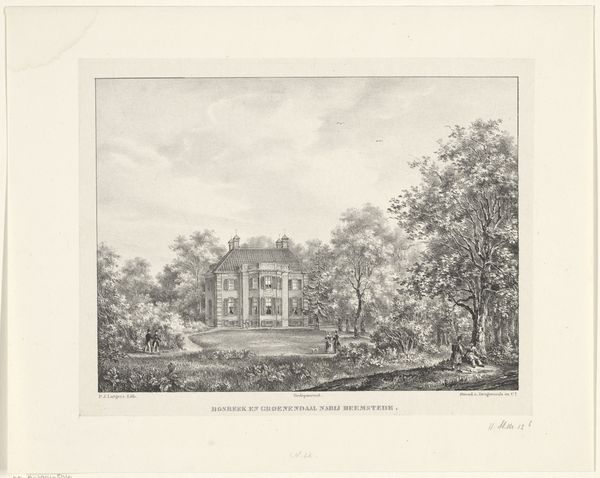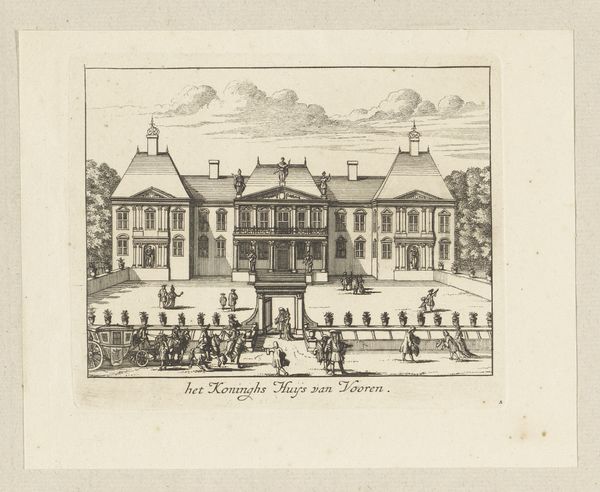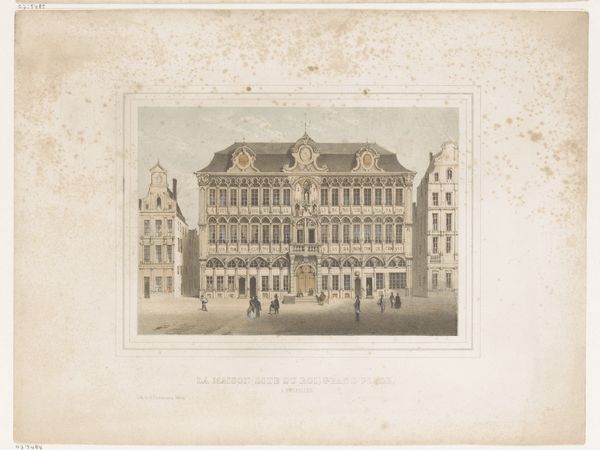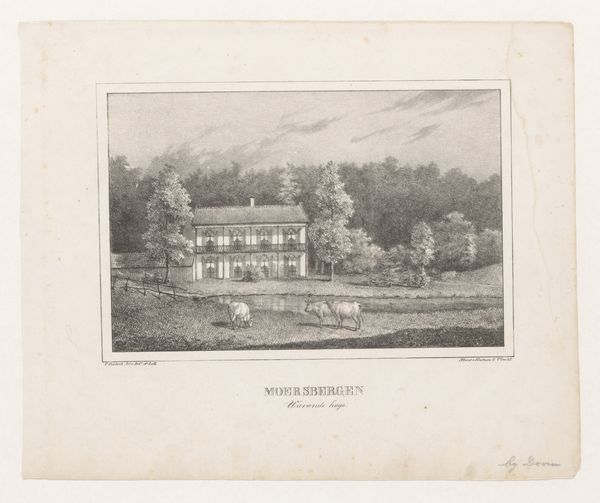
print, etching, architecture
#
16_19th-century
# print
#
etching
#
landscape
#
academic-art
#
architecture
#
realism
Dimensions: height 220 mm, width 300 mm
Copyright: Rijks Museum: Open Domain
Curator: This etching, entitled "Hof ter Mick te Brasschaat," by Florent Brant, captures a stately home in what appears to be a precise, academic style. It dates roughly from 1873 to 1909. Editor: My immediate impression is one of serene formality. The meticulous rendering and balanced composition evoke a sense of restrained elegance and perhaps even remoteness, although the materiality appears to be almost brittle, and definitely old. Curator: The etching process itself speaks volumes. Consider the labor involved, the repeated applications of acid to the plate, the deliberate choices in line weight to achieve the desired tonal range. It’s a time-intensive process, reflecting a particular commitment to craft and representation, a sign of dedication to old-fashioned manufacturing. Editor: Yes, the linework is fascinating, creating depth and texture. Note how Brant employs cross-hatching to model the facade and trees. These very specific, concrete aesthetic techniques generate subtle atmospheric effects despite being produced through mass labor and tools. Curator: Absolutely. And within its historical context, prints such as this were a form of reproduction and distribution of imagery; who had access to it? The home is a clear demonstration of wealth, so to whom was the piece marketed and distributed? These prints helped establish notions of cultural taste, circulated wealth's cultural capital, and contributed to the legitimization of social hierarchies in this part of Belgium. Editor: Certainly. And those formal aspects speak so directly, here, of classical balance and Renaissance-inspired details to establish a clear message of sophistication. See how the building's central axis and symmetrical arrangement reinforce a sense of order and control. Note that repetition of the columns. I'm seeing here echoes of architectural treatises. The artwork and process might not be completely separate, as such. Curator: But it's all so interwoven, isn't it? The house, the print itself – they all stand as objects produced by specific means, with specific functions and with a clear demonstration of production that helps to form social structures. It’s all deeply connected. Editor: Indeed. Looking at the intricate detailing and structured composition I appreciate more fully what the building represented and signified both for the artist and its intended audience. Curator: I am intrigued about the place's position in an economy and cultural values. Editor: I find new beauty in understanding the formal and social interrelations you brought forward.
Comments
No comments
Be the first to comment and join the conversation on the ultimate creative platform.
